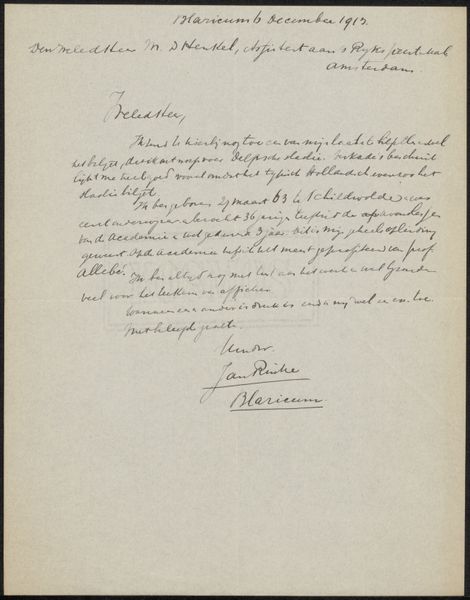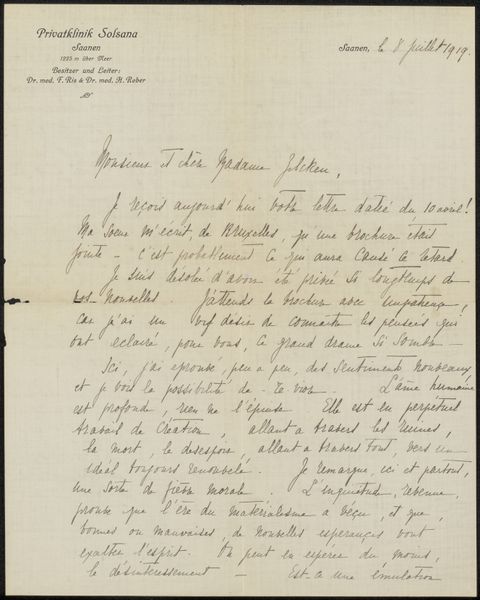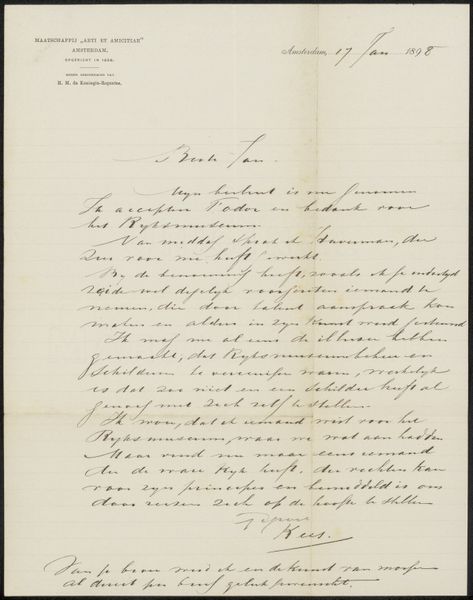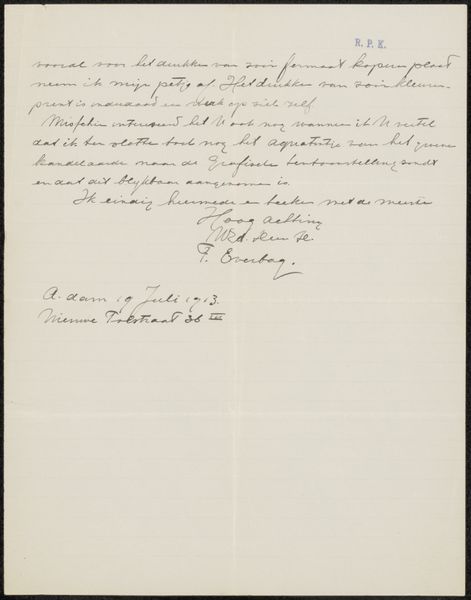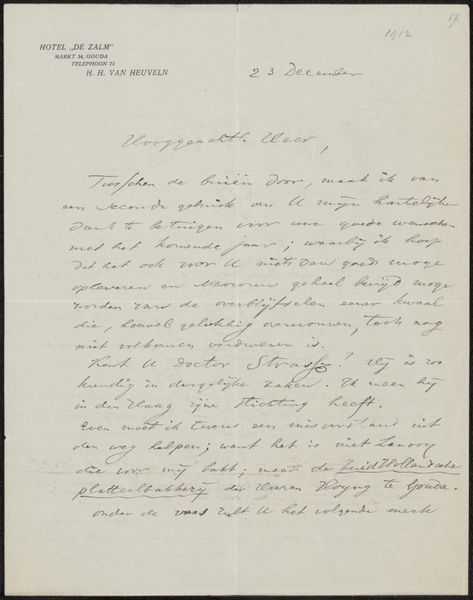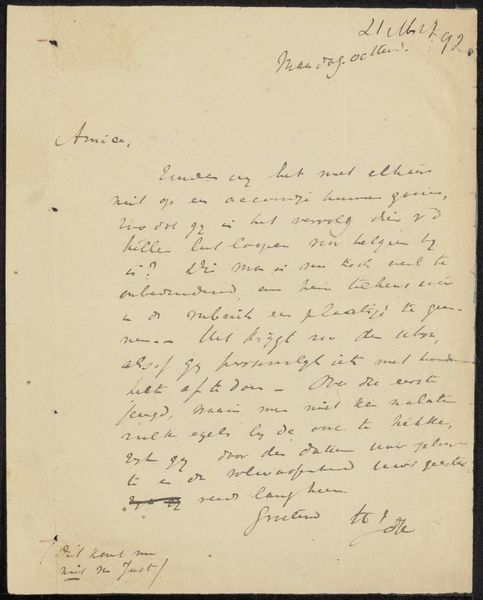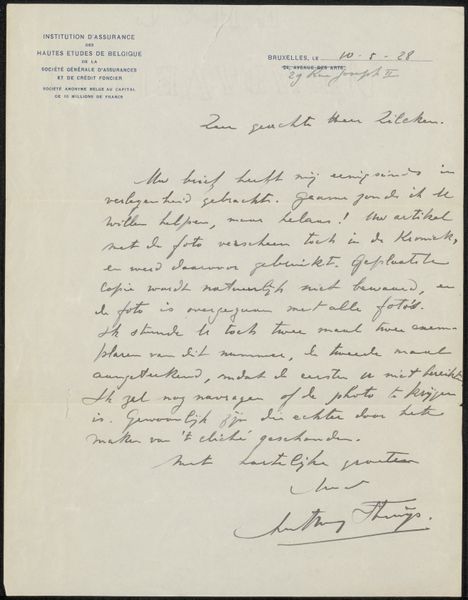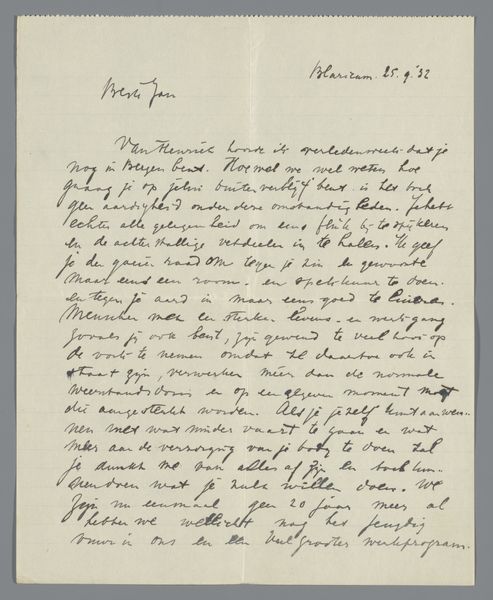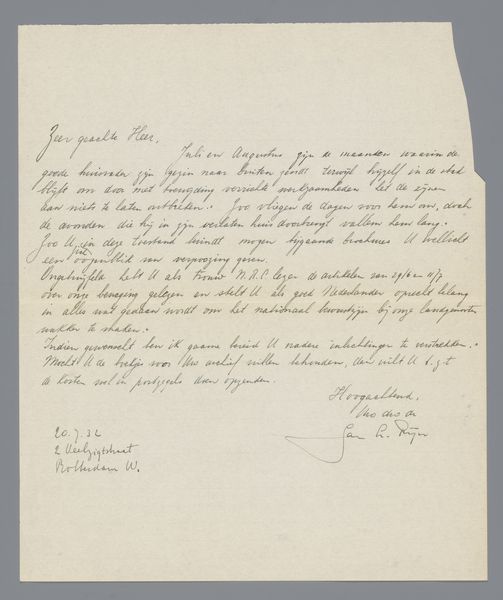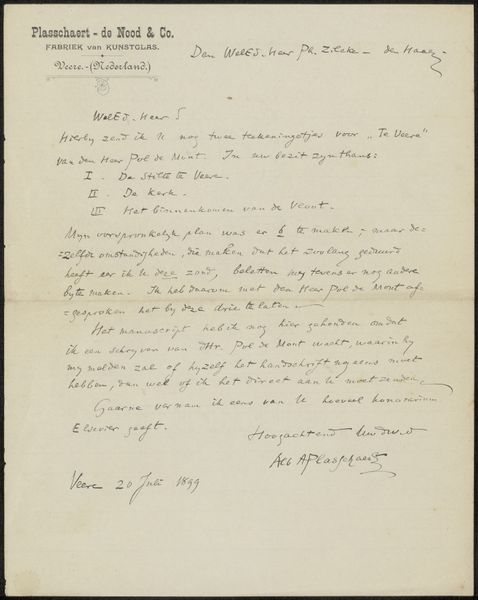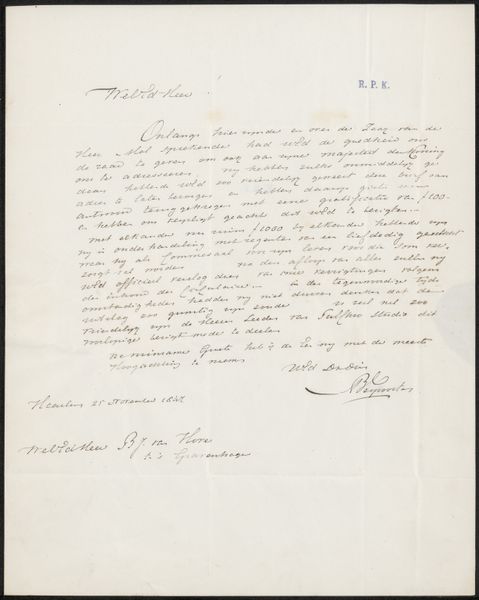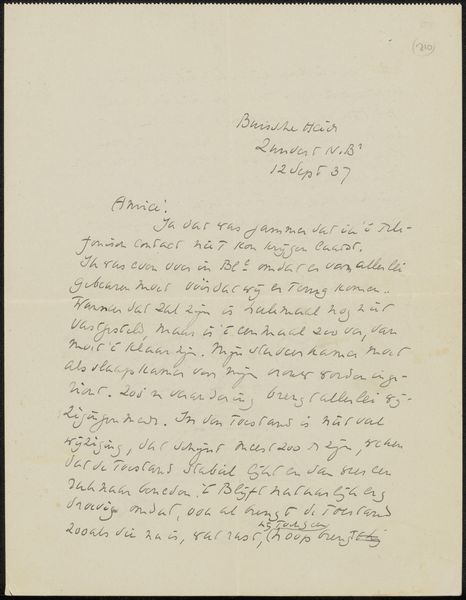
drawing, paper, ink, pen
#
drawing
#
aged paper
#
ink paper printed
#
old engraving style
#
hand drawn type
#
paper
#
personal sketchbook
#
ink
#
ink drawing experimentation
#
pen-ink sketch
#
ink colored
#
sketchbook drawing
#
pen
#
sketchbook art
#
calligraphy
Copyright: Rijks Museum: Open Domain
Curator: We're looking at "Brief aan Philip Zilcken," thought to be from 1894, created by Johannes de Koo. The materials include ink and pen on paper. A humble drawing elevated through time, materiality and purpose. What's your take? Editor: Immediately, I get this lovely sense of intimacy. The sepia tones suggest a memory, like uncovering an old document in your attic. It’s delicate and personal. You can almost smell the paper... old paper, ink, secrets. Curator: Indeed, the medium is fundamental to its nature. This letter exemplifies the accessibility of art. Pen and ink were readily available, a far cry from commissioning oils. It democratizes the artistic process. We must remember, it represents a direct communication between individuals within a complex social network. Editor: That's so true. Look at that elegant script! It's like a performance in itself, a kind of dance with words, full of subtle flourish and variation. It feels very human and unfiltered. The controlled yet relaxed stroke is very satisfying. There's this undeniable aesthetic quality in what was meant to be pragmatic writing. Curator: And consider the socio-economic conditions surrounding the production. Paper, ink, and even the act of writing indicate levels of literacy and economic means. Its very existence challenges rigid class divides related to the making of "high art." It's the raw data that contextualizes creativity and connects it to industry. Editor: Absolutely, it transcends mere functionality. This isn't just a means to convey a message, the handwriting brings a human feel that mass printing cannot imitate. We, perhaps, unconsciously perceive it. Curator: By closely studying the physical artefact—the texture of the paper, the nuances of the ink—we understand labor in cultural production. Editor: Agreed. Looking at "Brief aan Philip Zilcken", I see how deeply personal it feels while remaining an object worthy of such analytical conversation. I think the heart of the letter adds a layer to its creation which demands our focus, in conjunction with its process.
Comments
No comments
Be the first to comment and join the conversation on the ultimate creative platform.
